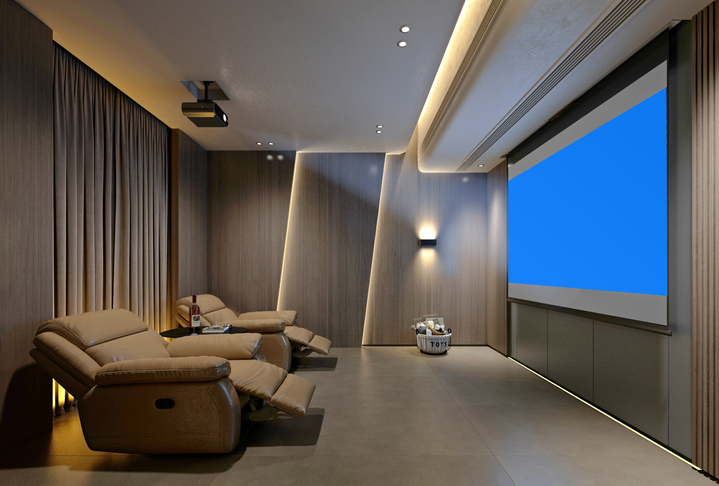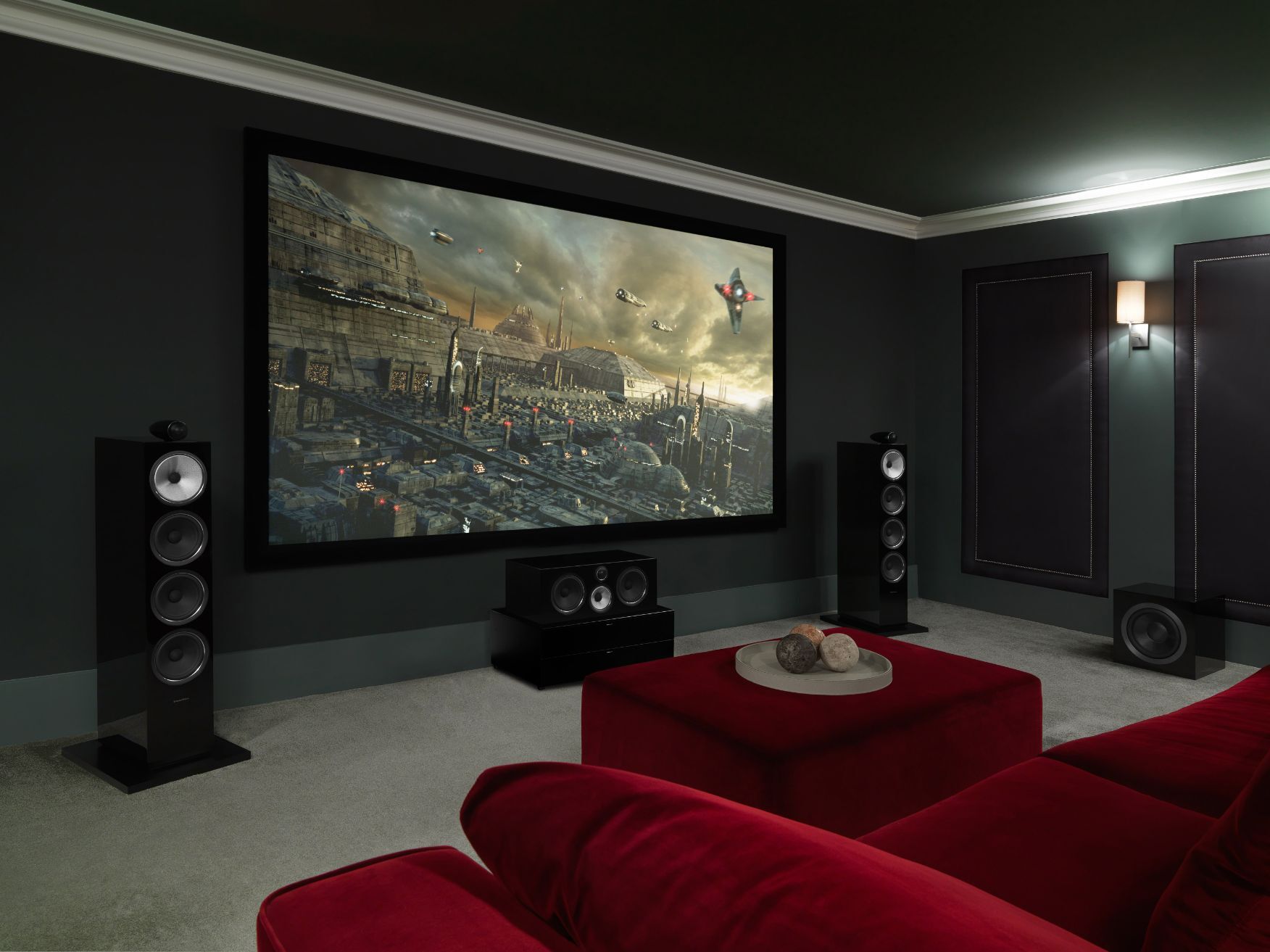Top Home Theater Tampa Installers Offering Tailored Solutions
Top Home Theater Tampa Installers Offering Tailored Solutions
Blog Article
Home Theater 101: Whatever You Required to Know for a Cinematic Experience in the house
Creating a home cinema that measures up to the motion picture experience of a commercial theater entails careful consideration of several parts, including screen choice, audio systems, and space format. Whether you are contemplating the optimal screen size or the ins and outs of border sound, comprehending these fundamentals is vital.
Picking the Right Screen
When establishing a home movie theater, choosing the right display can make or break the viewing experience - home theater design tampa. The screen functions as the focal point of your setup, influencing image top quality, seeing angles, and overall aesthetic. Key factors to think about include display kind, resolution, and dimension
First, identify the suitable display size based on your space measurements and seating distance. Next off, pick between various display types, such as fixed-frame, motorized, or retractable displays, each offering distinctive benefits.
Resolution is one more vital aspect. For a genuinely immersive experience, consider a screen developed for 4K and even 8K material, ensuring sharpness and clearness. Furthermore, consider the display's gain, which affects illumination and comparison; a greater gain can boost illumination in well-lit rooms, while a reduced gain might be preferable for darker atmospheres.
Choosing Sound Equipment
Audio equipment is an important element of any home theater system, dramatically enhancing the overall viewing experience. The selection of audio gear can determine the depth, clearness, and immersion of sound, crucial for creating a cinematic atmosphere.
When selecting audio equipment, take into consideration a surround sound system, which typically includes a receiver, numerous audio speakers, and a subwoofer. A 5.1 or 7.1 network system is advised, where the first number stands for the speakers and the second the speaker, offering an immersive soundscape. The receiver is the heart of the system, handling audio and video clip signals, and should support modern-day layouts like Dolby Atmos for an enhanced spatial experience.
Quality audio speakers are essential; seek models that supply a balanced audio account with good bass feedback. Floor-standing speakers can generate richer sound, while shelf alternatives conserve room. In addition, take into consideration cordless choices for convenience of installation, although wired systems often deliver exceptional performance.

Ideal Seating Arrangements
Developing an excellent home theater experience pivots significantly on optimal seating arrangements. The arrangement of seats plays a crucial duty in both convenience and seeing high quality, straight affecting the overall cinematic experience.
First, think about the screen size and checking out range. A common guideline is to position seats at a distance around 1.5 to 2.5 times the angled dimension of the screen. This guarantees an immersive experience without stressing the eyes.
Next, altitude is important. If your seats remains in a tiered format, the back rows must be more than the front to avoid obstructions. For level seats, make sure that the front row is not also near to the display, and that everybody has a clear line of vision.
Additionally, take into consideration the setup in terms of social dynamics. Team seats can improve the common experience, while specific seats may be liked for individual viewing.

Last but not least, prioritize comfort with ergonomic seats that sustains extended watching durations. Integrating reclining chairs or cushioned seats can considerably enhance the experience, making the home cinema a favored destination for both amusement and relaxation.
Lighting and Setting
Efficient lights and atmosphere are important components of a properly designed home theater, as they significantly influence the checking out experience. The appropriate illumination can enhance the cinematic feeling, while inadequate choices can detract from it. For optimal outcomes, consider a split illumination strategy that consists of ambient, task, and accent lighting.
Ambient lighting offers basic illumination, making sure that the space is not entirely dark, which can stress the eyes. Dimmer buttons are very advised, permitting changes based on the material being viewed. Task lighting, such as wall surface sconces or flooring lights, supplies practical lighting for activities like analysis or browsing the space without interfering with the general atmosphere.
Accent lights can be used to highlight architectural attributes or create centerpieces, including deepness this page and rate of interest to the space. LED strip lights behind displays or along shelves can offer a refined radiance that enhances the aesthetic experience without overwhelming the visitor.

Wiring and Installation Tips
A well-planned electrical wiring configuration is essential for attaining ideal performance in your home theater system. Appropriate circuitry not just makes certain top notch audio and video signals but likewise improves the general visual of your space. Begin by drawing up your design, determining where each element will certainly be placed, including your display, speakers, and receiver.
When selecting wires, focus her response on premium, appropriately gauged wiring to minimize signal loss. HDMI cables ought to be utilized for video clip connections, while speaker cord must match the specs of your speakers and amplifier. Choose in-wall ranked cable televisions to adhere to security criteria and keep a clean look.

Final Thought
In recap, creating an exceptional home theater experience needs cautious consideration of numerous components, including screen selection, audio devices, seating setups, lights, and electrical wiring. Each element plays an important role in accomplishing ideal performance and setting, inevitably boosting the pleasure of home amusement. By focusing on these elements, a motion picture environment can be efficiently duplicated, allowing for immersive watching experiences that equal typical theater setups. Attention to information in each location is vital for total complete satisfaction.
Developing a home theater that his response measures up to the cinematic experience of a business theater involves cautious factor to consider of numerous parts, including screen option, sound systems, and area design.When establishing up a home theater, selecting the ideal display can make or break the viewing experience. Next, select in between various display kinds, such as fixed-frame, motorized, or retracting screens, each offering distinctive benefits. For a really immersive experience, think about a display designed for 4K or also 8K content, guaranteeing intensity and clarity.In recap, developing an outstanding home cinema experience needs careful factor to consider of various elements, consisting of screen selection, audio equipment, seating plans, lighting, and wiring.
Report this page